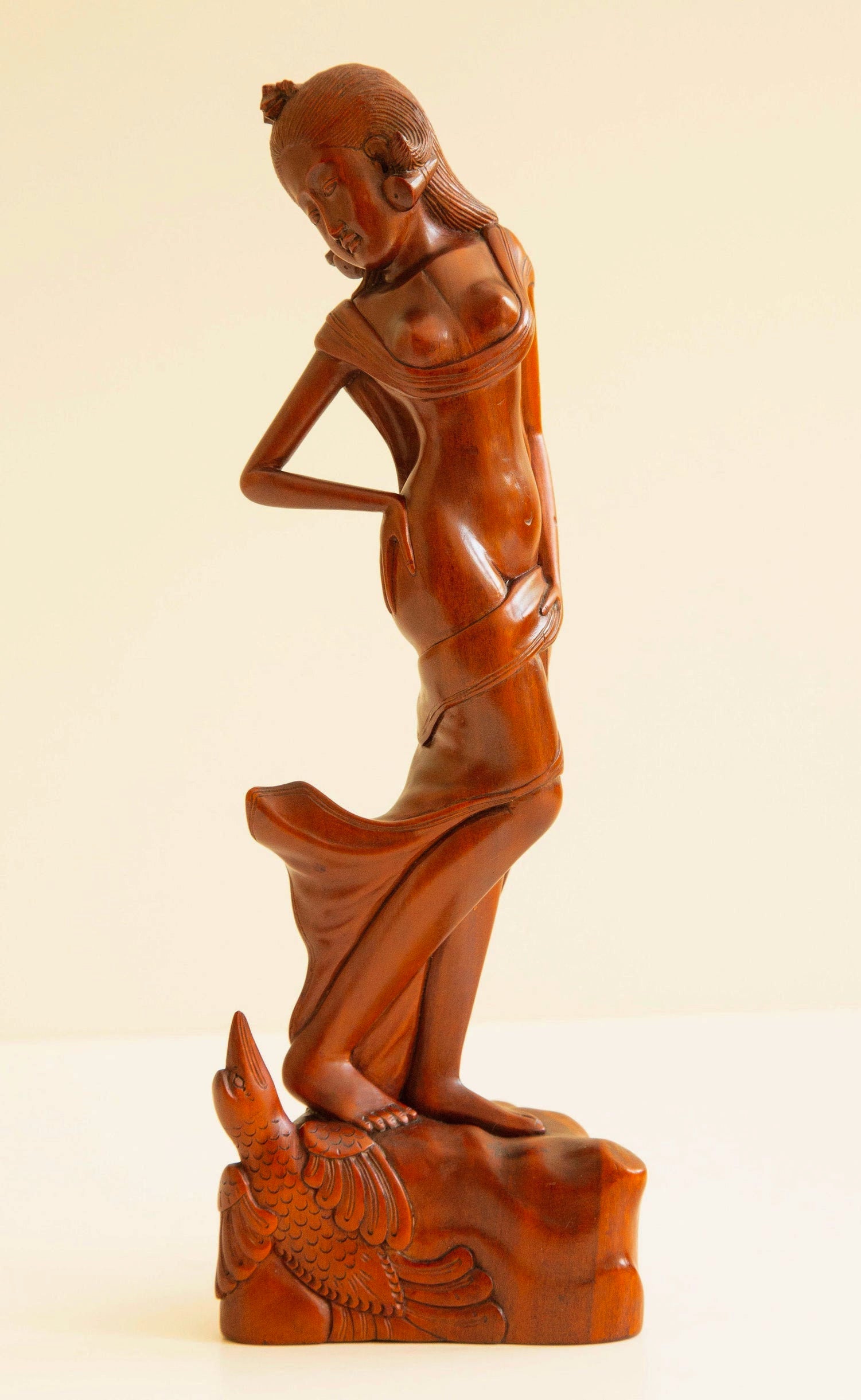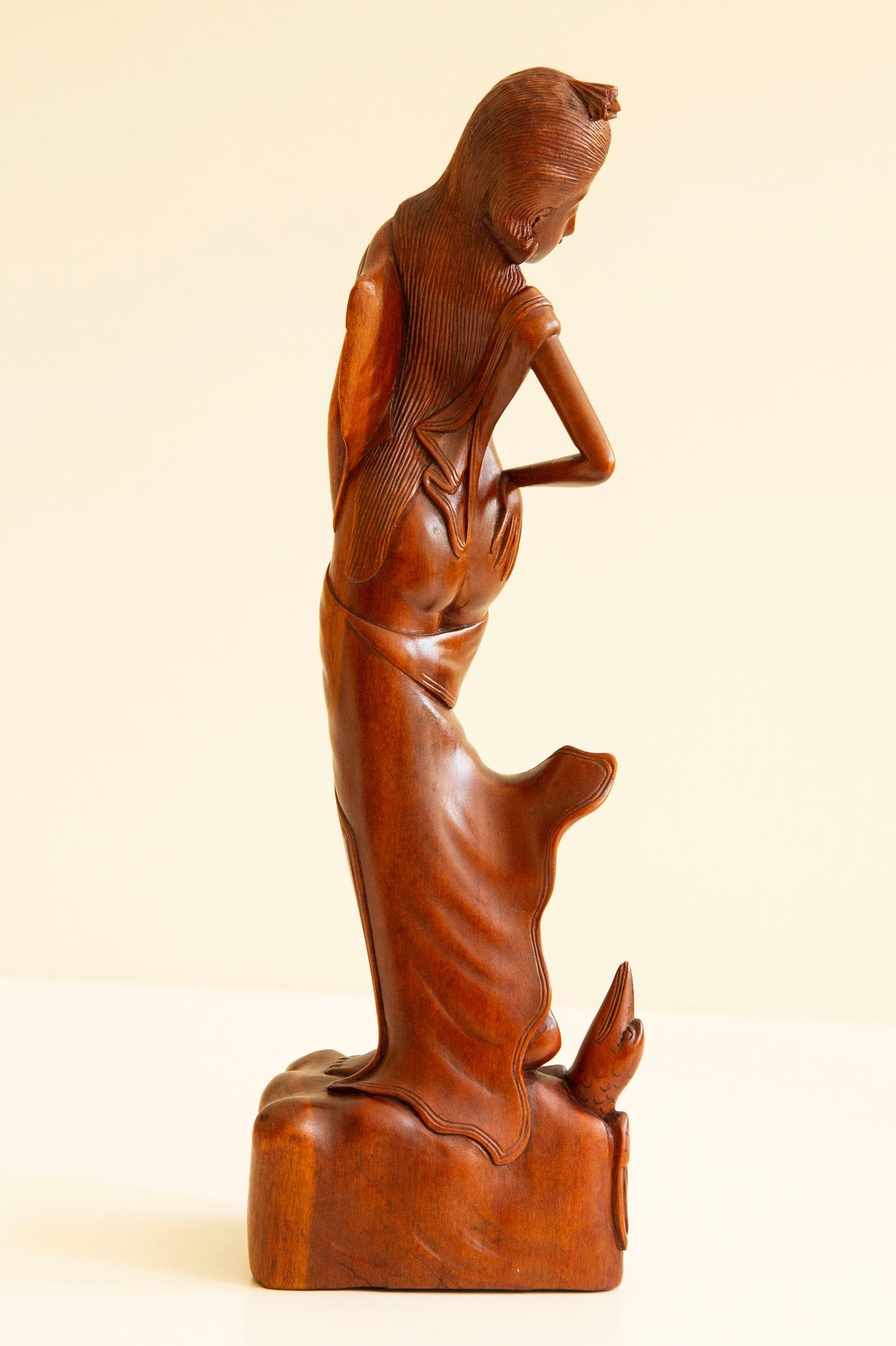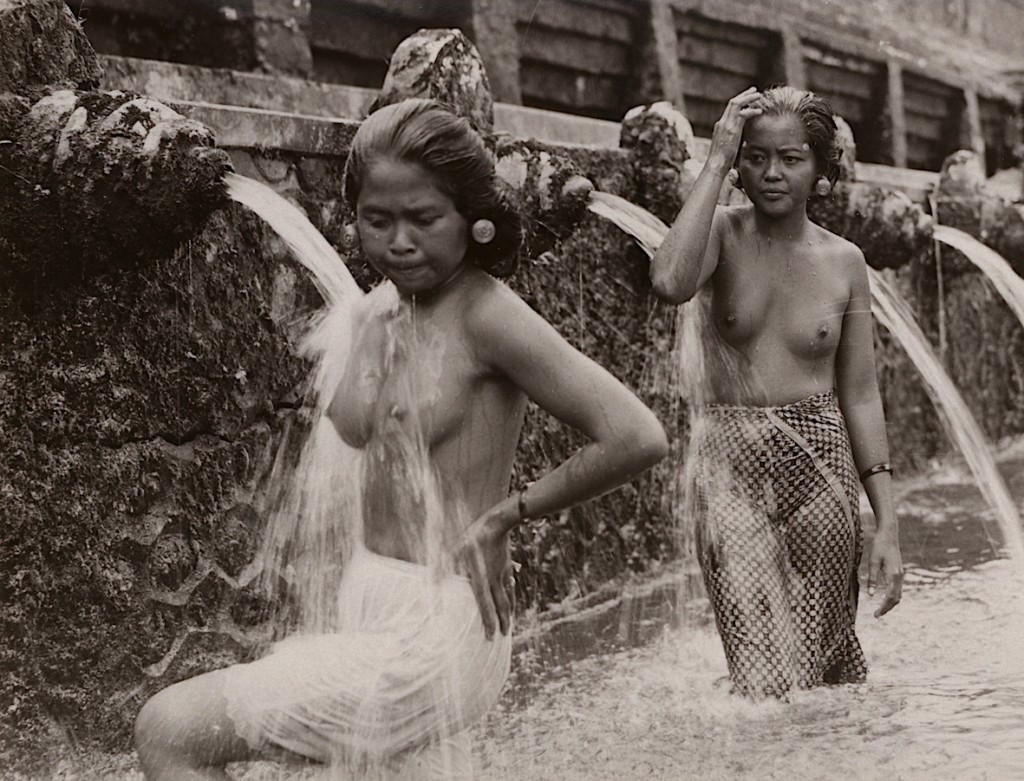

This beautifully carved figurine of a half-naked Balinese woman on a rock* was made by a skilled woodcarver in the 1950s. She’s depicted in an erotic pose with bare breasts and a frangipani flower in her hair. One hand rests defiantly on her buttock, while the other hand covers her pubic area with a selendang (long batik cloth). Funny detail is the bird at her feet that looks up curiously. Notice also the movement of her sarong (batik cloth that is worn as a skirt) blowing in the wind.

This genre of wood carvings with bathing women originated in the 1930s when woodcarvers started to make statues of scenes from everyday life in addition to traditional religious statues. Usually the woman is depicted sitting on a rock, grooming her hair. So not the bathing itself is depicted, but a moment afterwards or in between baths. Wood carvings of women standing after bathing are somewhat rarer. With these sculptures the emphasis is more on the body and feminine curves.
Island paradise
Figurines of beautiful women were popular with the tourists. This also had to do with Bali’s reputation as an island paradise, which was enhanced by the pictures of bare-breasted women by photographers, such as the German physician Gregor Krause, the German artist Walter Spies and the American photojournalist Horace Bristol. And by the paintings of scantily dressed Balinese women by Western artists like Adrien-Jean Le Mayeur de Merprès and Willem Hofker.
The old black and white photo above shows how the woodcarvers were inspired by everyday scenes. The picture was taken around 1935 and shows two Balinese women, taking a bath in the holy well of Pura Tirta Empoel. The posture of the woman in the front is similar to the posture of the wooden figurine.
* pictures by BrandNewVintageStore on Etsy
What a beautiful figure! By seeing it my first feeling was: I’ve seen a pose like this somewhere before… but where? And then I remembered: the pose is a little similar to that of “The Ball Player” (“La joueuse de boules” https://mba.caen.fr/oeuvre/la-joueuse-de-boules ) by Jean-Léon Gérôme. Just a funny coincidence I guess.
LikeLike
Indeed, I also see some resemblance, but that must be a coincidence. But the Balinese woodcarvers were certainly inspired by Western sculpture, which is also reflected in the more natural postures of the woodcarvings from the 1950s.
LikeLike